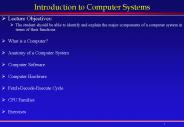GXT’s – cycle ergometer workload computation - PowerPoint PPT Presentation
1 / 11
Title:
GXT’s – cycle ergometer workload computation
Description:
... (HR2 - HR1) Calculate the VO2 for each work load using the ACSM metabolic equations (pp. 132-140). Submaximal Exercise Tests Use the submaximal work load ... – PowerPoint PPT presentation
Number of Views:201
Avg rating:3.0/5.0
Title: GXT’s – cycle ergometer workload computation
1
GXTs cycle ergometerworkload computation
Given 70 kg person, pedaling at 50 rpm, with 2
kg of resistance. Compute workload in kgm/min,
workload in watts, and the ABSOLUTE and RELATIVE
oxygen consumption.
2
Submaximal CRF Tests
Sub-maximal tests are similar to max GXTs, but
the subject does not have to go to maximal
exercise.
Maximal GXTs are used to predict ischemic
heart disease, and to get a TRUE measure of VO2
max. Submaximal tests are used in most fitness
settings. Maximal exercise testing is not always
feasible.
3
Submaximal CRF Tests
- Assumptions
- A steady-state HR is obtained for each
- exercise work rate and is consistent each day.
- A linear relationship exists between HR and
- work rate.
- The maximal workload is indicative or the
- maximal VO2.
- The maximal HR for a given age is uniform.
- Mechanical efficiency (at given VO2) is
- the same for everyone.
- The subject is not on medications that alter
heart rate.
4
Submaximal CRF Tests
In sub-max VO2 test, utilize the theory that
oxygen consumption and HR are linear. This
holds true for HR between 110 and 150 bpm YMCA
protocol needs TWO data points, where HR is
between 110 and 150, those data points are
extrapolated to predict the max VO2.
5
Submaximal CRF Predictions
- The HR max has been shown to vary as much as ? 11
bpm. - The equation 220 age, gives a low estimate.
- The equation 210 (0.5 x age), gives a high
estimate.
6
Steps to administering Submaximal YMCA cycle
ergometer test
- Page 80
- Complete pre-test items (informed consent, etc)
- 2. Select test protocol (YMCA)
- Estimate participants HRmax (220-age)
- 4. Determine 85 HR max
- 5. Review procedure with client
- 6. Record seat height
- Start metronome (if needed).
- Have subject pedal at 50 rpm.
- 9. When correct pace is achieved, set initial
resistance.
7
Steps to administering Submaximal YMCA cycle
ergometer test
- Start timer for first 3 min stage.
- Check resistance and observe participant for
signs - and symptoms.
- At 130, measure and record BP and HR.
- At 230, measure and record HR.
- At 250, get participant RPE.
- At 255, ask, How are you doing?
- At 300, if HR is less than 85 HRmax, BP is
- responding normal, and participant is okay,
increase - resistance .(Unless min 2 and 3 are more than 5
bpm - apart.
8
Steps to administering Submaximal YMCA cycle
ergometer test
- Repeat steps 10 through 16 until you have
completed - one stage past the stage that induces a HR of 110
bpm, - or there is another reason to stop the test. Go
back to stage - 1 for cool down, and repeat steps 10-15, stopping
at 300 - in the cool down stage.
- 18. Talk with the participant and check out any
problems.
9
Submaximal CRF Calculations
- A graphical plot of HR responses to a GXT on a
treadmill, cycle, or bench step can be used to
estimate VO2 max. A line is drawn through HR
values and is extrapolated to predicted max HR.
10
Calculating VO2 max
- See Figure 11.3 for graphing procedures
- Determine the slope (b) by calculating the ratio
of the difference between the two submaximal (SM)
work loads (expressed as VO2) and the
corresponding change in submaximal heart rates - b (SM2 SM1)/(HR2 - HR1)
- Calculate the VO2 for each work load using the
ACSM metabolic equations (pp. 132-140).
11
Submaximal Exercise Tests
- Use the submaximal work load (expressed as VO2)
as calculated to predict max VO2 - VO2 max SM2 b (HR max - HR2)
- Example calculation































